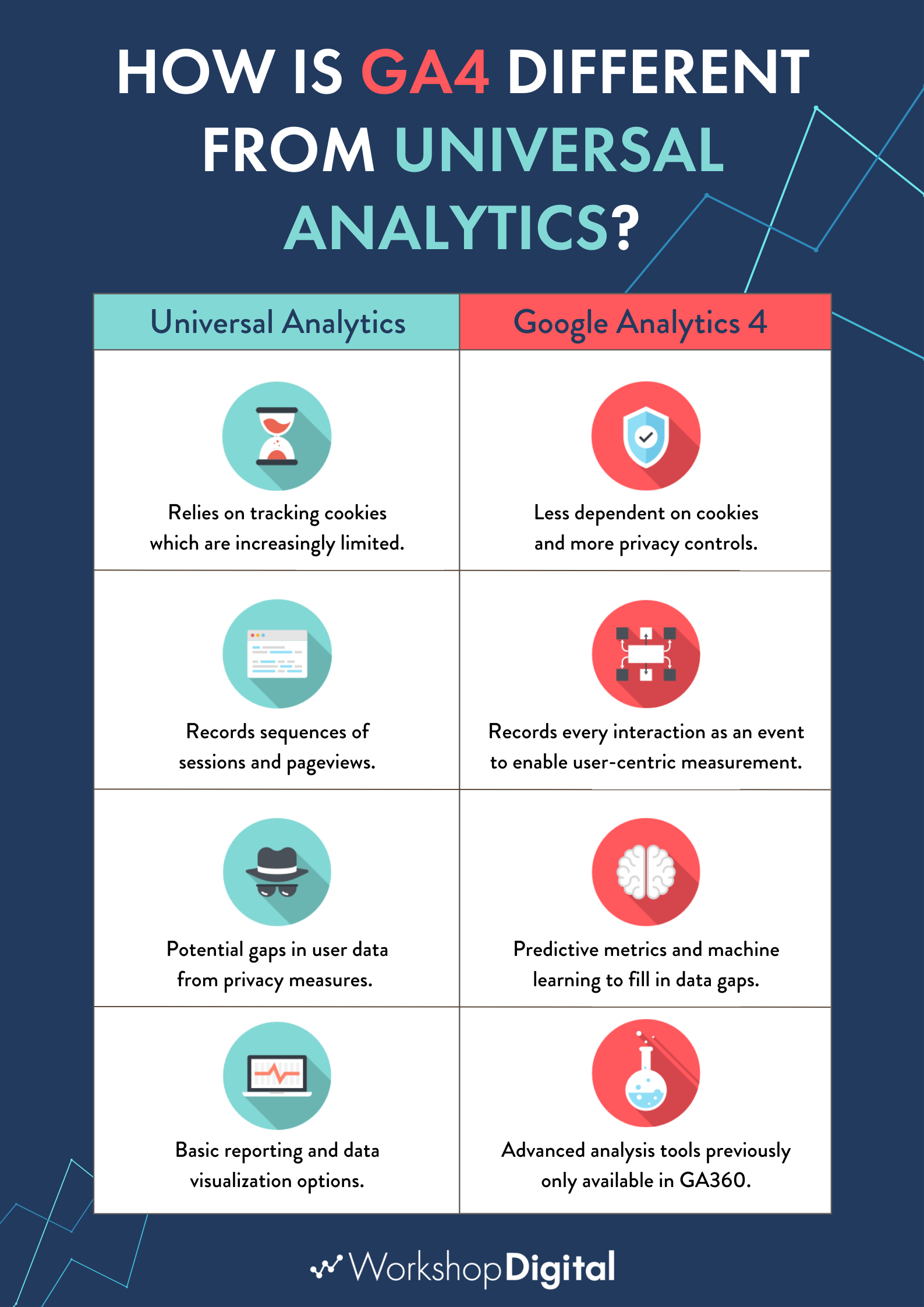With Google Analytics 4 (GA4) replacing Universal Analytics on July 1 next year, marketers need to start preparing now to take advantage of new features and avoid losing important historical data. Fortunately you can install and run GA4 alongside Universal Analytics during the transition period. Setting up GA4 is the easy part – the bigger challenge is setting expectations and encouraging adoption within your marketing team and senior stakeholders.
GA4 is the next generation of web analytics and improves our ability to measure the entire online customer journey. The evolution is so dramatic that the tracking code and reports are incompatible with Universal Analytics. The playing field becomes level as all marketers are starting over with a blank slate and zero historical data in the GA4 platform. Companies that are slow to implement GA4 and adapt their analytics practices risk falling behind more progressive competitors.
The migration to GA4 requires more than a simple update to the tracking code on our websites. Your migration will be much smoother if you plan ahead with an organized, thoughtful approach to implementation.
Get familiar with the new features in GA4
Let’s address the elephant in the room. GA4 looks and acts very differently from Universal Analytics and many people don’t fully understand it when they first log in. That’s normal with new software and a little research can help you hit the ground running. Here are some of the biggest changes you can expect to find in GA4:
- GA4 uses cookies but is built for privacy. This “under the hood” change is significant and helps ensure GA4 provides valuable, anonymized data even as browsers, operating systems, and individual users become more privacy-focused. Machine learning helps fill in the gaps with predicted results when cookies aren’t available.
- GA4 is built on events, not pageviews. Every interaction, including pageviews, is recorded as an event. This gives marketers more flexibility to measure sequences of interactions that don’t necessarily generate new pageviews.
- GA4 has built-in machine learning to surface insights. Humans aren’t great at processing huge amounts of data and spotting patterns in streams of data, but computers are. GA4 automatically highlights trends and anomalies to allow marketers to act more decisively.
- GA4 has more robust reporting capabilities. With new reports added regularly, GA4 gives marketers the ability to analyze their website and campaign data with tools that were previously only available in the paid version of GA360.

Plan a stress-free migration before flipping the switch
Since GA4 and UA don’t allow for apples-to-apples comparisons, marketers must take a fresh look at their analysis and reporting needs. You’ll want to consider each of these areas before building out your GA4 implementation:
- Tracking Setup: Your success with GA4 starts with a successful implementation of the tracking code, so it’s important to consider who will manage the changes to your website and how to implement, publish, and QA them properly.
- Data Collection: You need intuitive and actionable data about your digital campaigns and website performance to determine the success of your marketing efforts. Consider your organization’s data needs and wants with a measurement model that ladders up to your higher-level business goals.
- Historical Data: Universal Analytics will stop recording new sessions on July 1, 2023. Historical data will be deleted from Google Analytics six months later. Plan ahead to ensure you can compare your future GA4 data to historical performance.
- Reporting: Great analytics programs are about more than just gathering data. Empowering your teams with data-driven insights can accelerate your digital marketing performance. Spend time thinking about the outputs of your GA4 migration and start dreaming up new ideas.
We created a downloadable GA4 Migration Planner that walks you through each of these steps with examples and questions to guide your implementation plan.
Add GA4 tracking code to your web properties
Once you have a migration plan in place, it’s time to add the tracking code to your website, mobile app, and any other properties you want to measure. This step is important to get right so you can continue to collect data seamlessly during the transition period.
The most common method to add the code directly to your website or use a tag manager such as Google Tag Manager. You should start seeing real time data in your GA4 property within a few minutes.
The data won’t match your Universal Analytics data perfectly due to the differences in tracking methodologies but the general trends should correlate fairly closely.
Keep an eye on website traffic and conversions over the next few months
Most marketers will continue to report out of Universal Analytics while GA4 accumulates data. You should monitor GA4 data for accuracy while building out your conversion tracking capabilities and creating new reports.
You’ll have time to adjust your setup if you notice any large discrepancies in your data. This is also a great time to train your team and reset expectations about future reporting and analysis options. You can prepare your team by reminding them that GA4’s benefits ultimately outweigh the costs of switching and the eventual loss of historical data.
Don’t wait until July 2023 to begin customizing your GA4 setup!
We’re learning more about GA4 daily and new features are launching almost weekly. We should anticipate more changes between now and July 2023 when Universal Analytics officially goes away.
During the transition, remember that you’ve had years to get your Universal Analytics reporting tuned to your needs. Don’t expect GA4 to be perfect right away. Updating reports and analyzing data is quick and easy once you get familiar with the new tools.
____
Written by: Andrew Miller, Workshop Digital




